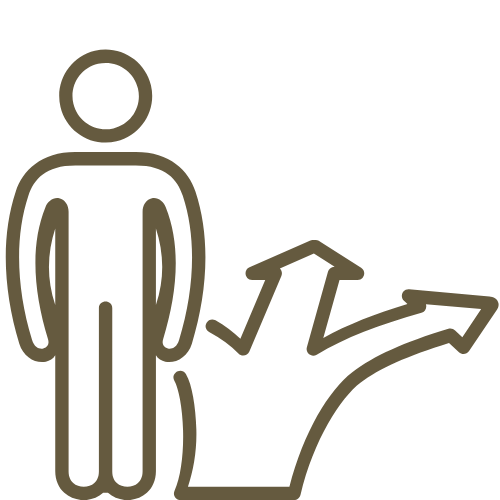Let’s do what works for you.
Progress starts with daring
I blend insight-oriented and solution-focused psychotherapy. That means we make sense of your patterns and behaviors and develop workable strategies that lead to improvements in your life.
We create a space where you’re encouraged to tackle the things you’ve been avoiding — whether that’s facing fears, sitting with discomfort, speaking up (even if it means disagreeing with me), exploring the parts of yourself you’ve kept in the dark, or trying new ways of thinking and responding.
Daring to step out of your comfort zone expands your experience and perspective. This is where progress happens.
Seeing your own progress builds confidence — and gives you momentum to keep going.
My aim is that when therapy ends, you’ll feel equipped to keep moving forward with your life improvement projects.
Picking tools that work
I like to pick and choose from a variety of treatment tools and adapt techniques in order to meet the individual needs of each client. As a lifelong learner, I enjoy refining my tools and adding new ones. That being said, I draw largely from the following treatment modalities:
Acceptance Commitment Therapy (ACT)
Cognitive Behavioral Therapy (CBT)
Dialectical Behavioral Therapy (DBT)
Protective patterns, hidden pain
Regardless of whether someone shares a trauma history early in therapy, I often see clients start to make sense of behaviors that once felt confusing or irrational. They recognize certain habits were like bandages — protective strategies that helped them keep moving through life. For a while, the bandages did their job.
But over time, life tests them, letting irritation seep through and reactivating old pain.
People respond differently. Some keep the bandage as it is, some replace it quickly, and others peel it back slowly, clean the wound, let it breathe, and apply care.
It is key to respect my client’s choices and meet them where they are at. They are in the driver’s seat.
Protective patterns can help or hinder. You decide what to keep, adjust, or let go.
Therapy, illustrated:
Thoughts
Thoughts are not facts. You can place a question mark behind them.
Was this a helpful thought?
Emotions
Emotions offer clues about what’s happening in your live and drive your behavior.
You can learn how to be in charge of your response to your emotions.
Behaviors
Let’s examine how this behavior is and isn’t serving you.
Understanding the function of a behavior is often an important first step in changing it.
Body
The body communicates about your mental and physical state through signals. Listen to what your body has to say.
Find out what you can do with your body to make yourself feel, think and function better.
Strenghts
I am as interested in looking for your strengths as I am in learning about your problems.
Recognizing and utilizing your strengths is a recipe for progress.
Purpose
Knowing what truly matters to you is your compass, doing things that align with what you value is fuel for your journey of healing and growth.














